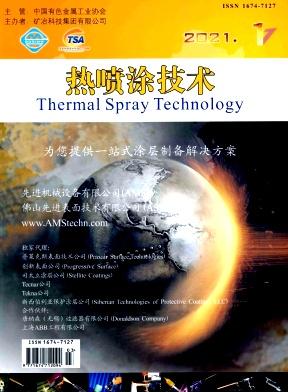Predicted Anode Arc Attachment by Local Thermodynamic Equilibrium (LTE) and Two-Temperature Arc Models in a Cascaded-Anode dc Plasma Spray Torch
引用次数: 0
Abstract
Anode erosion is a common concern in dc plasma spray torches. It depends largely on the heat flux brought by the arc and the dimensions, residence time, and mode of the arc attachment to a given location on the anode wall. This paper compares anode arc attachment modes predicted by LTE (local thermodynamic equilibrium) and 2-T (two-temperature) arc models that include the electrodes in the computational domain. The analysis is based on a commercial cascaded-anode plasma torch operated at high current (500 A) and low gas flow rate (60 NLPM of argon). It shows that the LTE model predicted a constricted anode arc attachment that moves on the anode ring while the 2-T model predicted a diffuse and steady arc attachment. The comparison between the predicted and measured arc voltage indicated that the 2-T prediction is closer to the actual voltage. A post-mortem observation of a new anode ring on a plasma torch operated under the same conditions confirmed the diffuse arc attachment predicted by the 2-T arc model.用局部热力学平衡(LTE)和双温电弧模型预测阳极电弧在级联阳极直流等离子喷涂炬中的附着
阳极腐蚀是直流等离子喷涂炬中常见的问题。它在很大程度上取决于电弧带来的热流,以及电弧附着在阳极壁上给定位置的尺寸、停留时间和方式。本文比较了LTE(局部热力学平衡)和2-T(双温度)电弧模型预测的阳极电弧附着模式,其中电极在计算域中。该分析是基于商业级联阳极等离子炬在大电流(500 a)和低气体流量(60 NLPM的氩气)下工作。结果表明,LTE模型预测了在阳极环上移动的收缩阳极电弧附着,而2-T模型预测了扩散和稳定的电弧附着。预测电弧电压与实测电弧电压的比较表明,2-T预测更接近实际电压。对在相同条件下运行的等离子炬上的新阳极环的事后观察证实了2-T电弧模型预测的弥漫性电弧附着。
本文章由计算机程序翻译,如有差异,请以英文原文为准。
求助全文
约1分钟内获得全文
求助全文

 求助内容:
求助内容: 应助结果提醒方式:
应助结果提醒方式:


